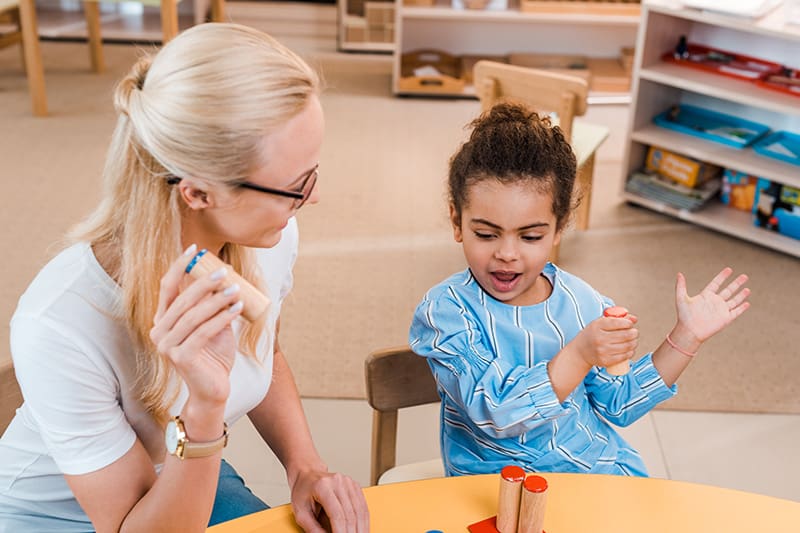The /b/ sound is a bilabial sounds, which means the lips are pressed together while producing the sound. It is also a voiced sound, which means that the vocal cords are vibrating when the breath is released from the lips. This is different than the unvoiced /p/ sound, for example, which gets its sound simply from the release of air.
The /b/ sound is one of the very first sounds your child will begin to make, beginning with infant babbling and progressing to simple words like “ba-ba” and “ball” by age 2-3 years. Since this is such a foundational sound for your child’s emerging speech skills, it is important to know if your child is on track. If your little one still struggles with the /b/ sound by age 4, it is imperative to seek the help of a licensed speech-language pathologist to help correct the delay and prevent future language struggles.
Here are some fun and simple ways to help your child produce the /b/ sound at home. You can also use these methods to monitor their ability and progress:
- Verbal cues
Let your child hear the correct pronunciation of the sound. Clearly and slowly repeat the /b/ sound in sets of 3 for your child. As she progresses and is able to make the sound herself, begin adding vowels to the sound for her to hear. E.g. “ba, ba, ba”, “bo, bo, bo”, “boo, boo, boo”
The /b/ sound is great for showing up in many common animal sounds. Use pictures of bees and sheep as visual cues to practice buzzing with closed lips and the “baaaa” sound.
- Visual Cues
Draw attention to your closed lips as you make the sound. Put your finger on your bottom lip just before you make the sound, drawing it slightly away as you make the sound. You can also use your hand as a puppet to illustrate the movement to your child. Bring your fingers together to illustrate a mouth with sealed lips for your child to imitate.
- Tactile Cues
When the /b/ sound is pronounced correctly, a small puff of air is released from the mouth. Hold your child’s hand in front of your lips so he can feel this as you make the sound. Then encourage him to practice the sound until he can feel the breath in front of his own mouth. As a voiced sound, you can feel the vibration of your vocal cords when you make the sound. Have your child put their hand on their neck as they make the sound to feel this taking place.
The /b/ sound is also a stop sound, which means that it is produced by completely “stopping” airflow, then releasing it in a burst which creates the sound. the /b/ sound cannot be “held”, and does not linger like an /s/ or an /m/ does. A fun activity to demonstrate this to your child is to have them bang their fist on the table or their leg with each repetition of the sound. This short, staccato action will create an association with the brief, explosive sound of /b/ and help your child imitate this in his own articulation.
- Awesome /b/ Activities
What sound does a sheep make? “Baa!” Don’t be afraid to get a little silly when you’re practicing the /b/ sound. Try imitating these animals with your child. Just make sure, she’s not getting carried away with the fun part and skipping over the correct articulation of the /b/ sound.












